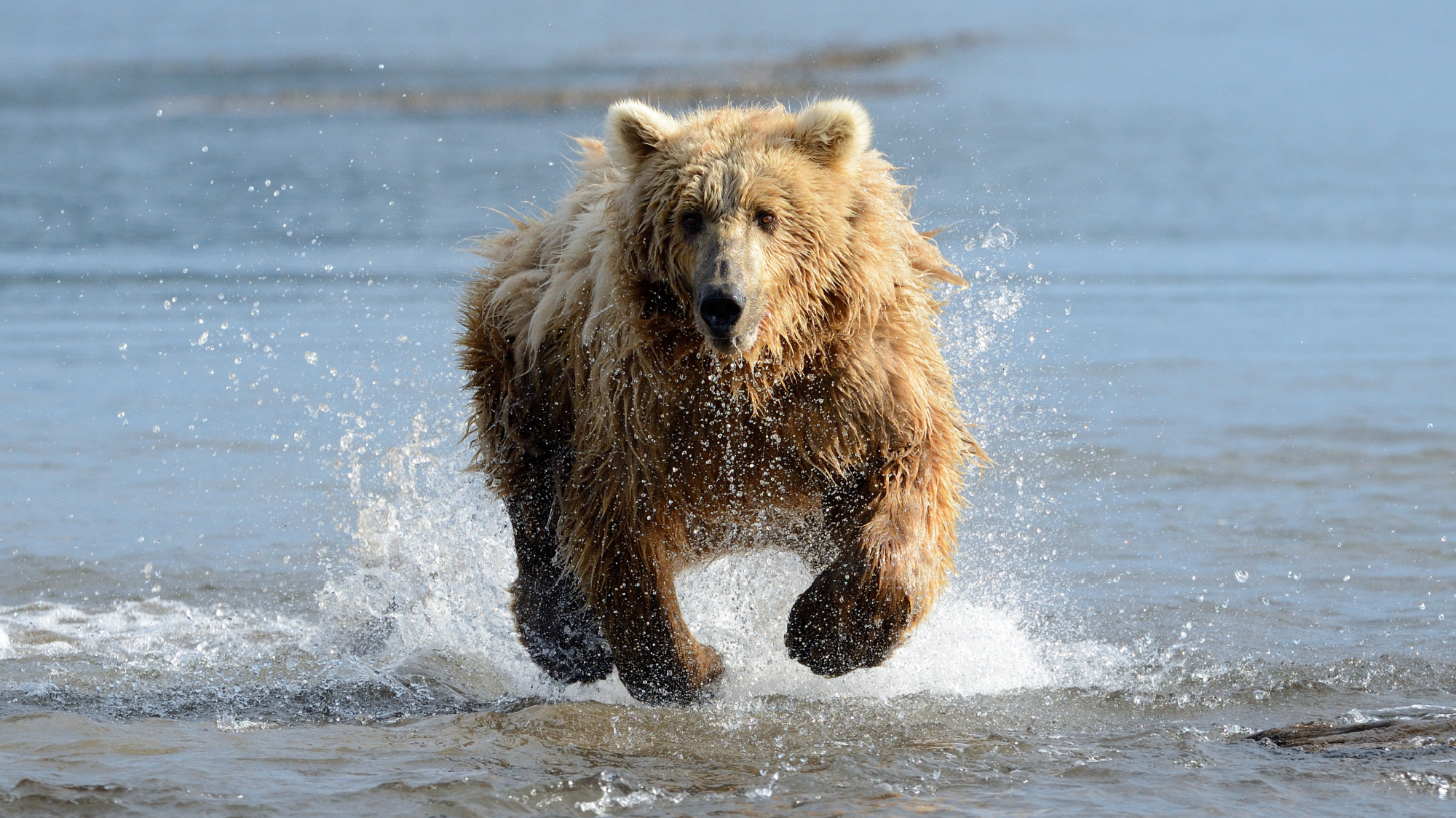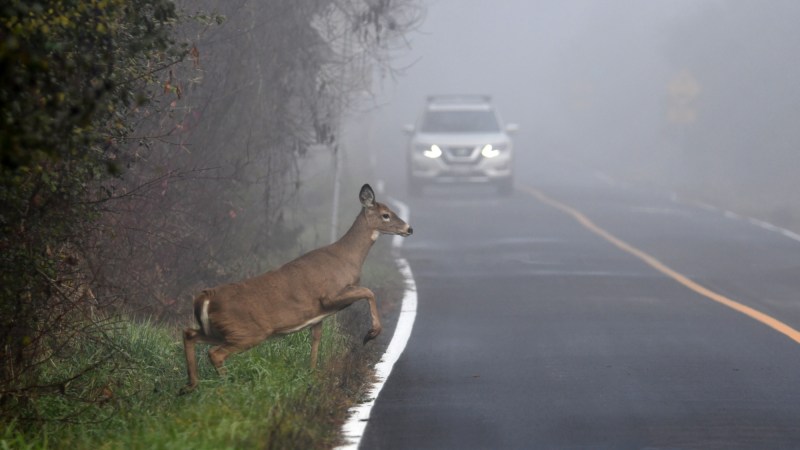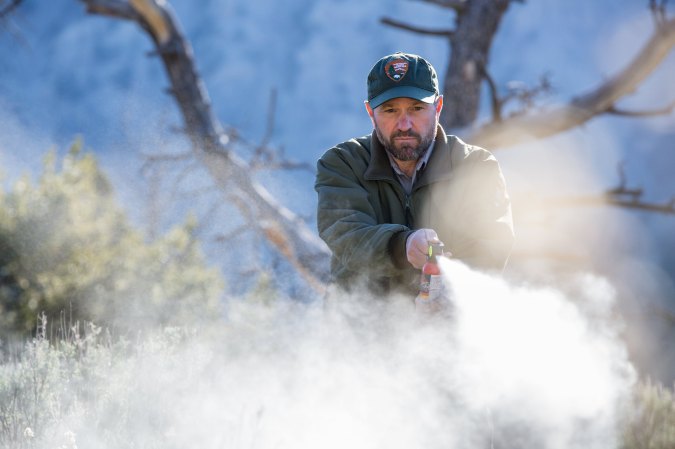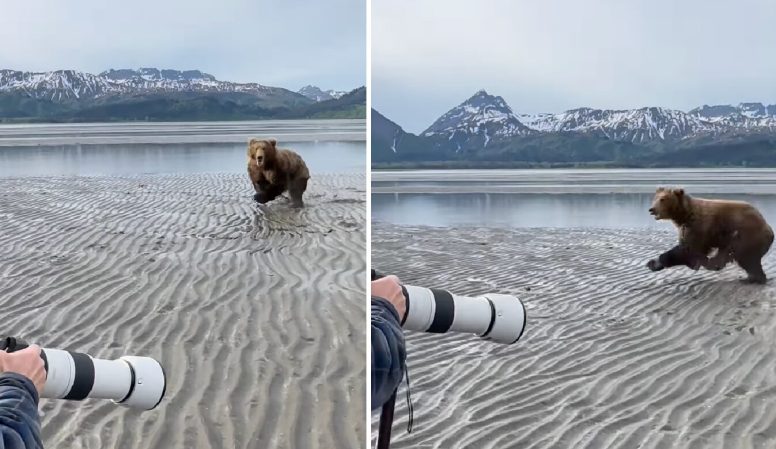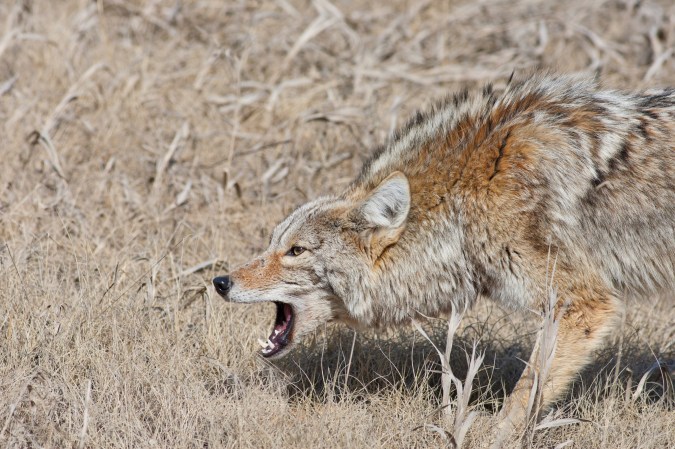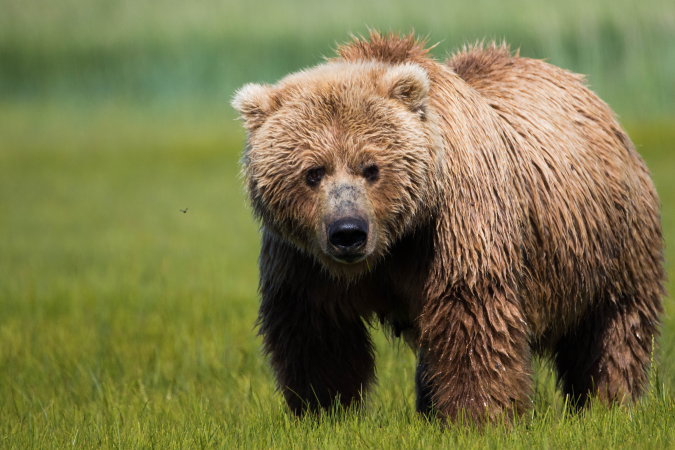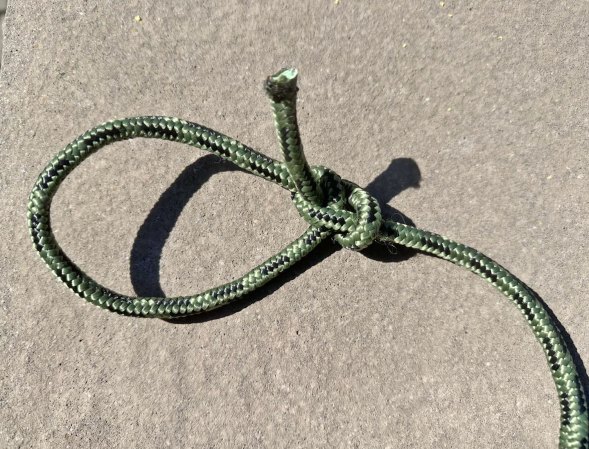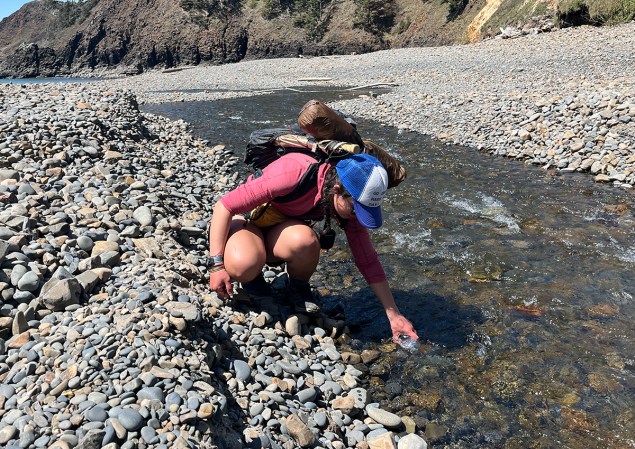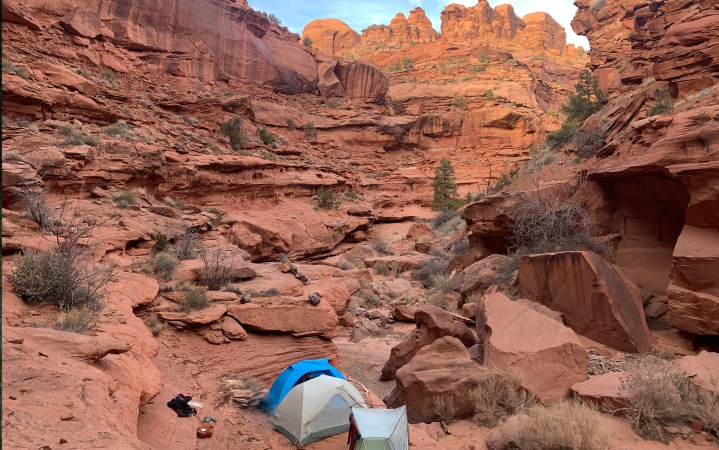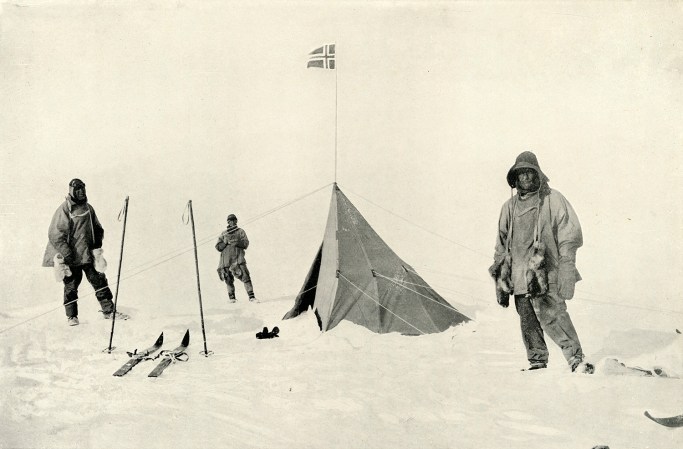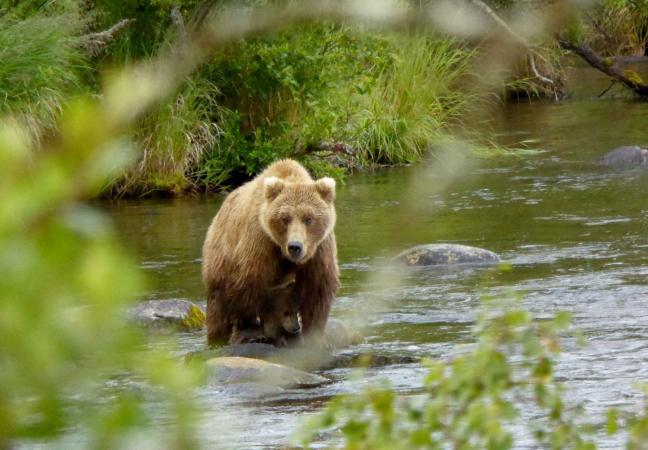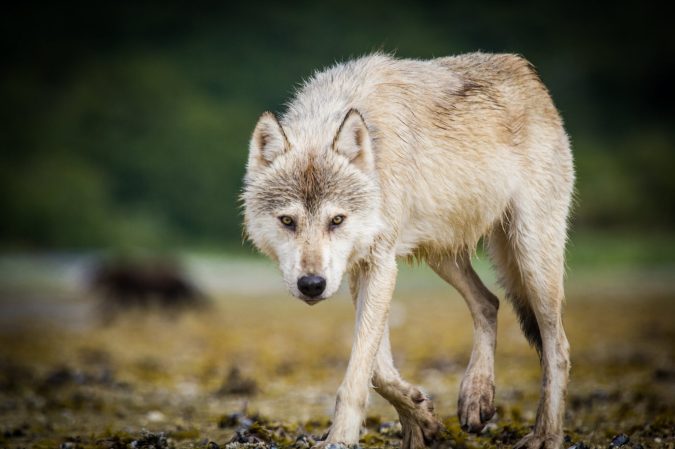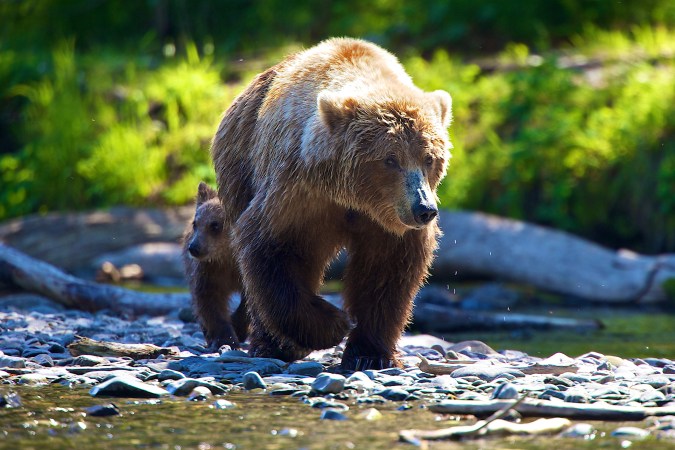There are a few common rules about bear safety everyone should know. One key rule? Never run away from a bear.
In addition to putting on bursts of speed up to 40 mph, some bears can sustain speeds of 20 mph or more for miles. Let’s dive deeper into how fast different species of bears can run and why they’re able to run as fast as they can.
How Fast Can a Bear Run: A Species Breakdown
North America is home to the black bear, the grizzly bear, and the polar bear. These species all have slightly different body mechanics and different top speeds. For example, while healthy black bears and grizzly bears have more long-distance endurance, polar bears can only exert themselves in short spurts to avoid overheating.
“Determining the maximum speed of any wild animal is fraught with difficulty,” Glacier National Park wildlife biologist John Waller says. “Some species have been clocked under controlled conditions, but for many, their speeds are based on estimates and anecdotal observations. This is true for bears.”
Despite the challenges, researchers have established benchmarks for grizzly bear speed, black bear speed, and polar bear speed. Here’s what we know:
- Grizzly bears: 40 mph
- Black bears: 30 mph
- Polar bears: 25 mph
How Fast Are Grizzly Bears?
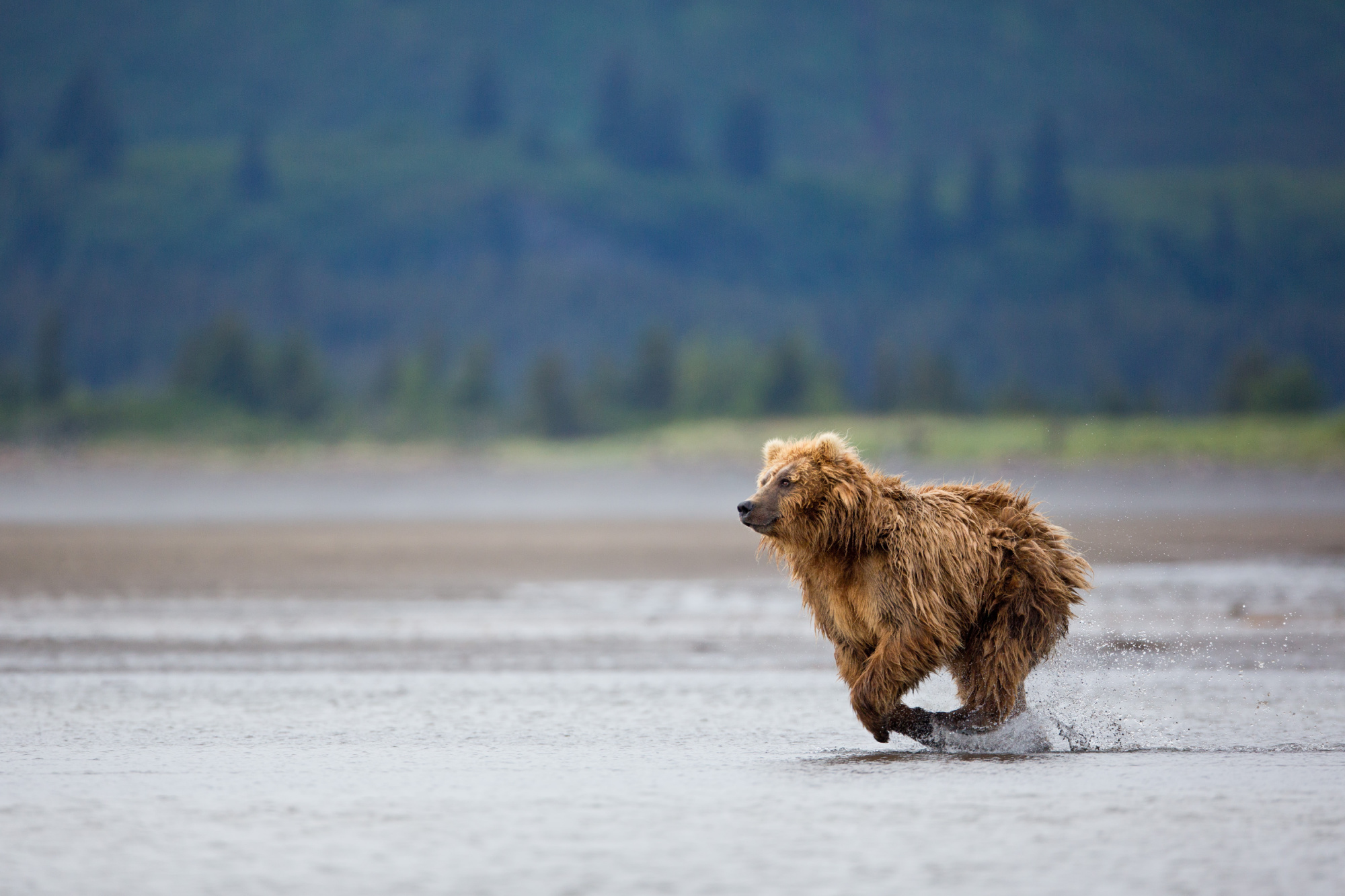
The grizzly bear, or brown bear, is the fastest bear in the world and can achieve a top speed of 40 mph, which means it can cover about 20 yards in a single second.
They can also run fast — if not at top speed — for longer than a few hundred meters, according to observations from Yellowstone National Park in 1937.
“Grizzlies are powerful beasts, and as evidenced by [a report], have considerable endurance,” assistant park naturalist William Kearns writes. “Covering two miles at from 25 to 28 miles per hour proves a stamina that would certainly try the best of horses.”
Kearns’ report describes an instance in 1930 when two naturalists drove to Norris Geyser Basin. Along the way, they came across a grizzly sow and two cubs in the road. They proceeded to follow the grizzly and cubs for 2 miles — while driving 25 mph all the way. Another incident involved a grizzly sow with two cubs chasing a series of cars on icy roads. During the pursuit, the grizzlies and cars topped out at 28 mph.
How Fast Are Black Bears?
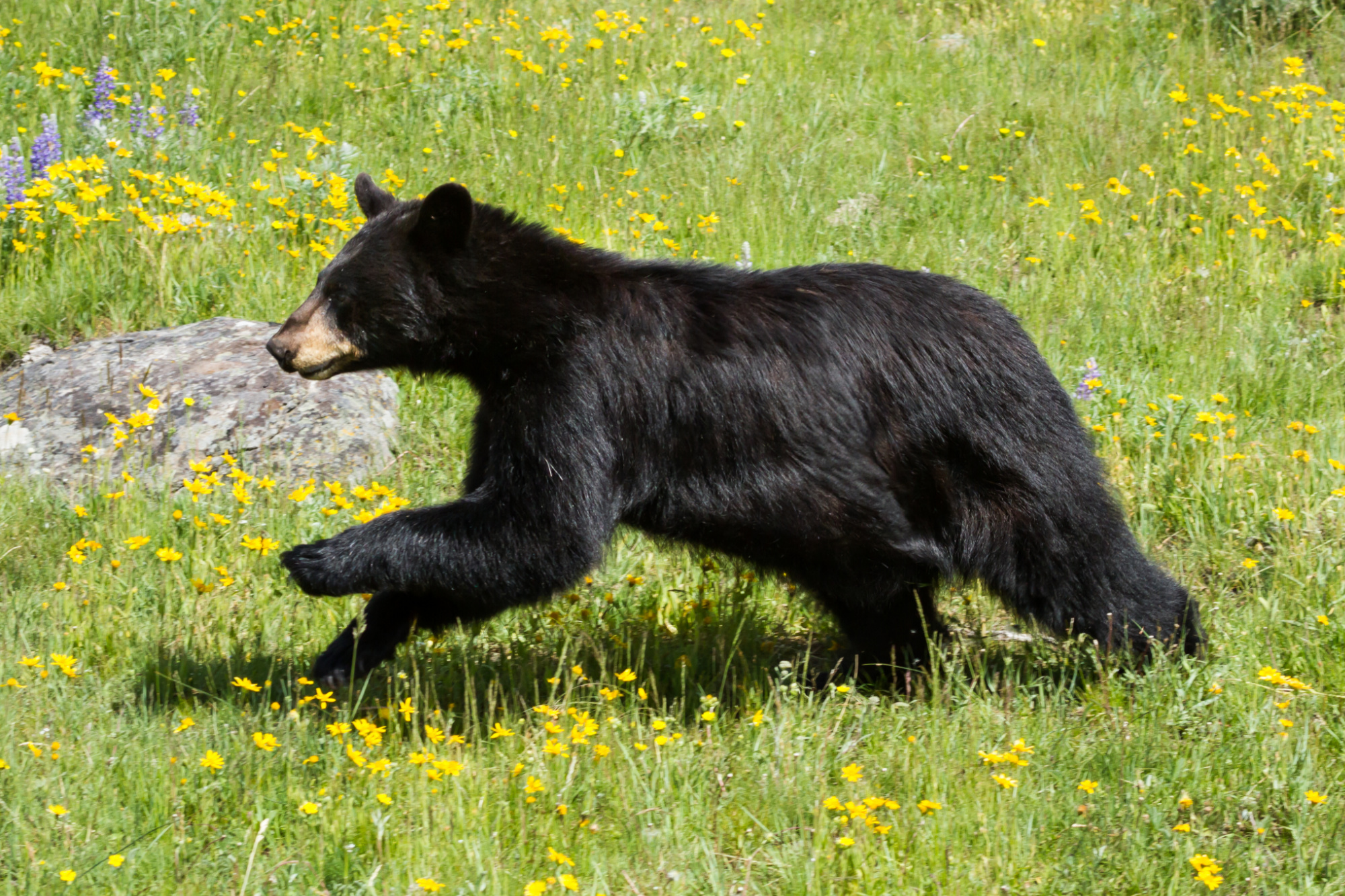
Lean black bears can also achieve top speeds of 30 mph. But if they’re bulked up for winter and have grown thick coats, they risk overheating if they run for too long. This might also be the case if they’re unnaturally large from eating human food.
How Fast Are Polar Bears?
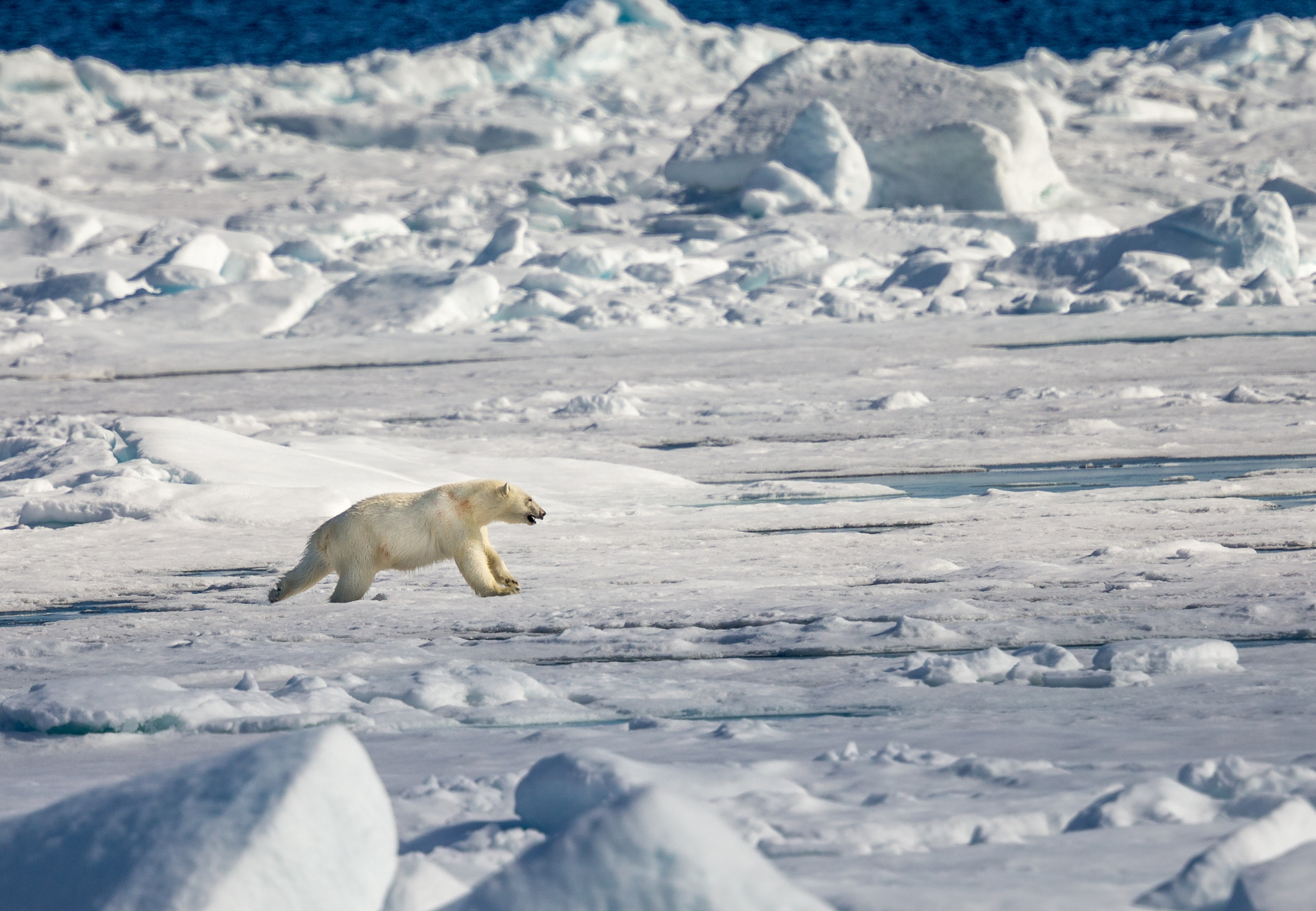
Polar bears have evolved to survive much colder temperatures than black bears and grizzly bears. This means they also overheat quickly and can only maintain their top speed of 25 mph for short bursts while chasing prey, but for no longer than roughly 30 seconds.

Researchers have discovered that a polar bear’s paws have significantly better traction than other bear species, enabling them to run more easily on ice and snow. This is due to larger papillae, or bumps, on their pads that help their paws cling to slick surfaces.
Why Can Bears Run So Fast?
Bears aren’t built like greyhounds, cheetahs, or pronghorn antelope. And yet, they’re able to run fast enough to violate suburban speed limits. How?
A bear’s speed is a byproduct of its biomechanics, or how the construction of its body is able to move and propel itself forward, although why bears can run as fast as they can remain something of a mystery. Still, there are a few key reasons that bears are slower than other land mammals but faster than we humans.
First, bears are plantigrade mammals. This means they walk with the whole surface of their foot on the ground. As a result, they’re not that efficient compared to other land mammals. It takes more effort for them to run than, say, the unguligrade pronghorn (which runs on hooves) or digitigrade cheetahs (which run on their toes). Other examples of plantigrade mammals include humans, raccoons, wolverines, badgers, porcupines, and rabbits. Bears are the largest plantigrade mammals, and they’re at their most economical gait when they’re walking. But they’re also quite strong, which might explain why they can run as fast as they can. They also have the added benefit of being quadrupeds (or four-legged animals), which are significantly faster than upright bipeds (or two-legged animals).
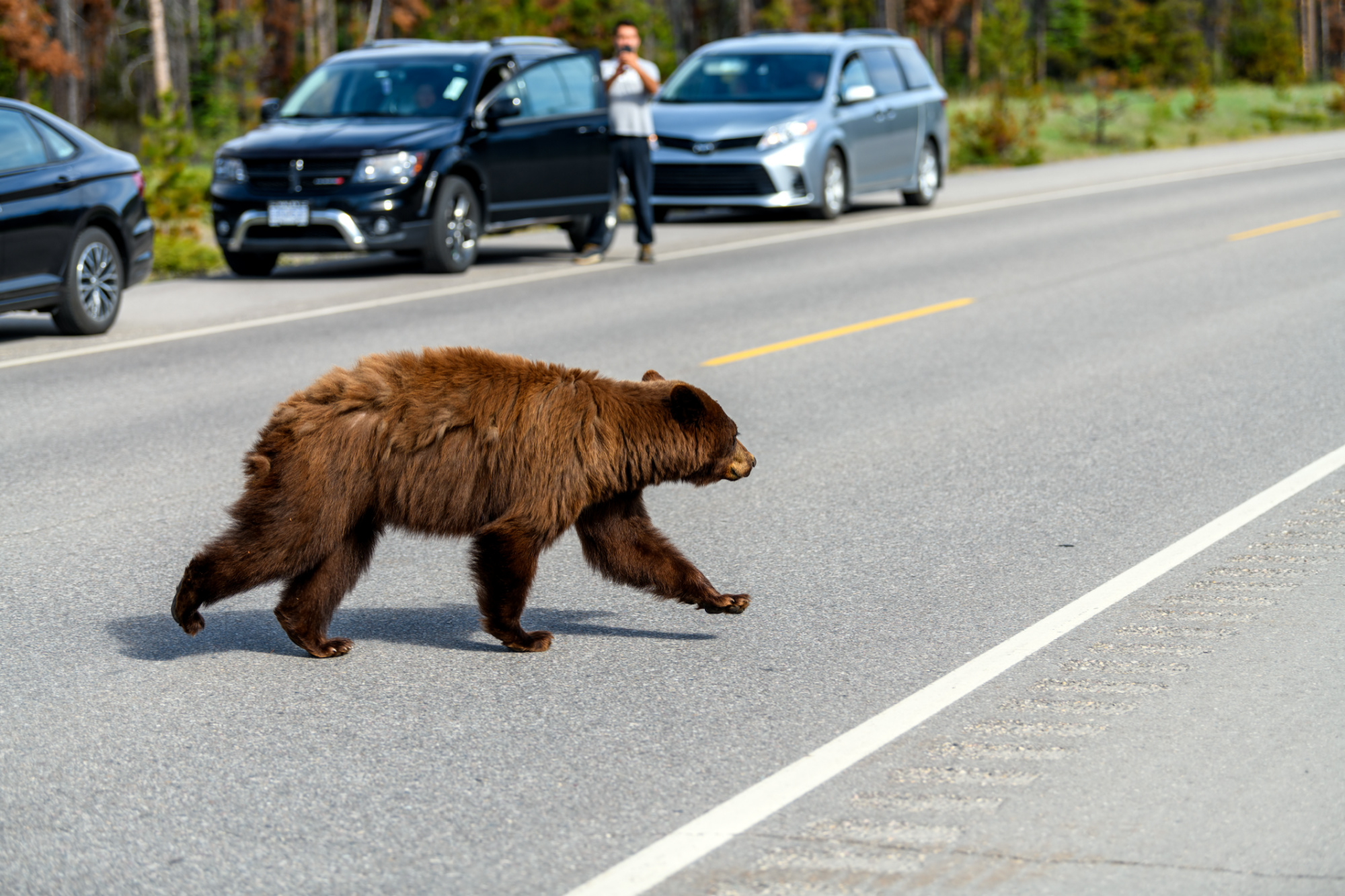
For comparison, here are a few top running speeds of mammals:
- Cheetahs: 70 mph
- Pronghorn: 60 mph
- Greyhounds: 45 mph
- Racehorses: 49 mph (the speed record set by Triple Crown winner Secretariat in 1973)
Can You Outrun a Bear?
The short answer is no. The top speed Usain Bolt ever reached was 27.3 mph, and he averaged 23.4 mph. Unfortunately, it might take some conscious effort to overthrow your fight-or-flight response and not run away. If you can avoid it, you increase your chances of survival.
“Running is a natural response to fear and often people instinctively retreat when they see a bear at close range,” Waller says. “It is very common for people’s feet to automatically go into reverse, but this usually results in them falling over backwards. So, not only are you unlikely to be able to outrun the bear, but you may not be able to stay on your feet.”
What to Do If You See a Bear
If you see a bear, follow key bear safety rules: If the bear is stationary, move away slowly and sideways, advises the NPS. This tactic lets you keep an eye on the bear and avoid tripping. Sideways movement is also relatively non-threatening. If the bear follows you, stop moving and hold your ground.
When you’re hunting, hiking, or otherwise moving through bear country, you should keep bear spray or a bear handgun on you. There are a lot of handguns for bear safety to choose from. Your decision might come down to picking between two popular options, like the 10mm vs .44 mag bear guns.
Whether you’re on a backpacking trip or a bear hunt (check out our guide to spring bears if you are), you probably won’t get much time to set up a high-quality shot.
You should also know where to shoot a bear in a defensive situation. Shot placement can be the difference between dropping the bear in its tracks and angering it.
How Fast to Deploy Bear Spray
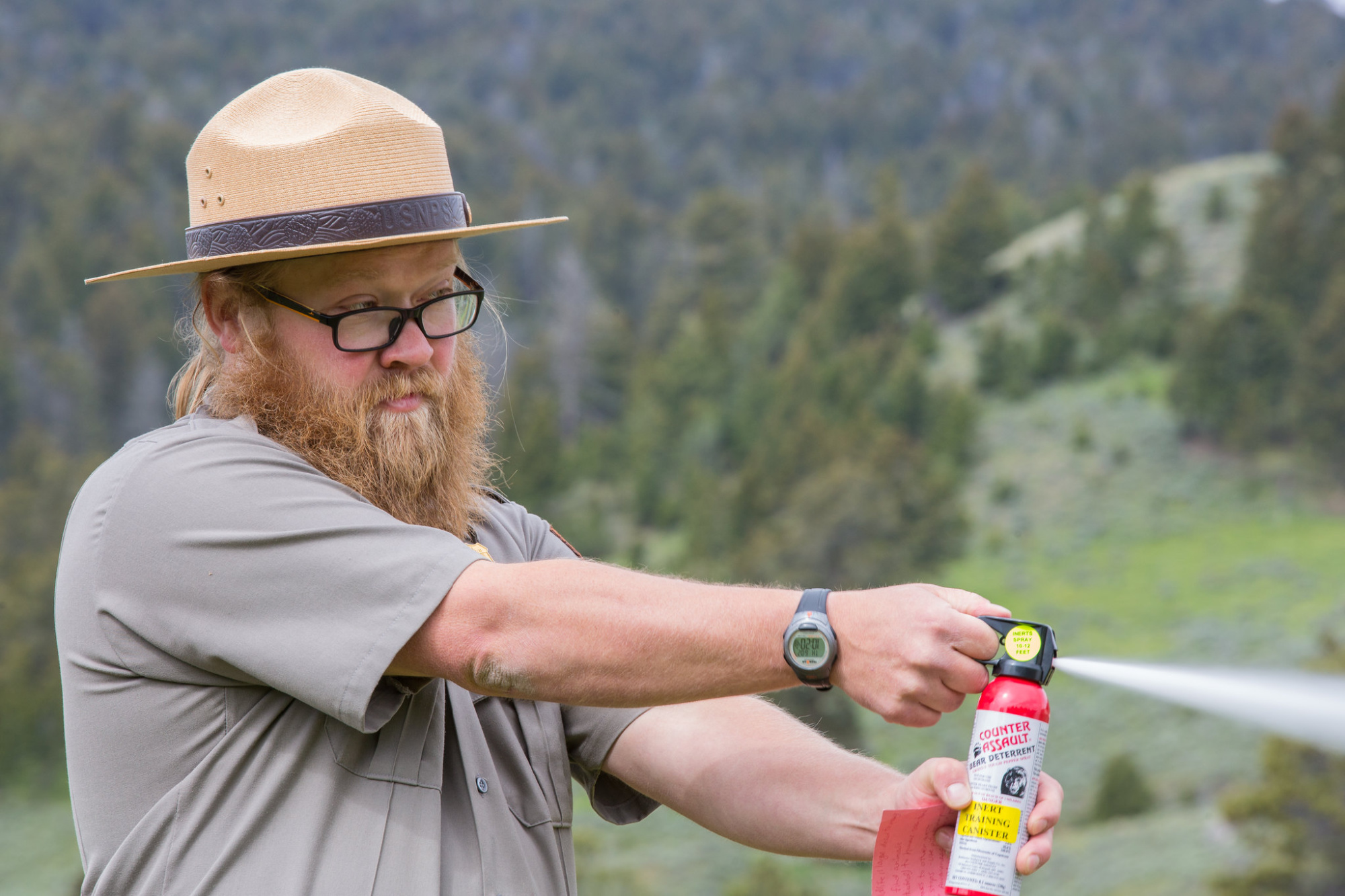
If you plan on spending time outdoors in bear country, you should absolutely learn to carry and use the best bear spray on the market. Waller says that, with practice, you should be able to grab your bear spray, remove the safety clip, and start spraying in roughly two seconds. (That’s why it should always be easily accessible and never buried in your backpack.) You should be able to grab your bear defense handgun similarly fast. That’s because lots of bear encounters are a surprise.
“The ‘surprise encounter’ occurs when people inadvertently get too close to bears, usually where visibility or hearing are impaired, for example by brush or moving water,” Waller says.
Bear Speed FAQs
Grizzly or brown bears are the fastest bear species in the world. They’ve been recorded topping out at around 40 mph.
This myth seems to mostly apply to running away from alligators, which has been debunked. Instead of trying to see if such a move would actually work in a bear encounter, follow basic bear safety rules instead. Resist the urge to run.
Probably not. Professional cyclists can reach up to 50 mph while biking on flat, even pavement. But that doesn’t mean escaping a grizzly bear on a bike in the wilderness is a good idea. A fall or a wrong turn could be fatal, and there’s no way you would be able to escape a grizzly on uneven terrain.
Final Thoughts on How Fast a Bear Can Run
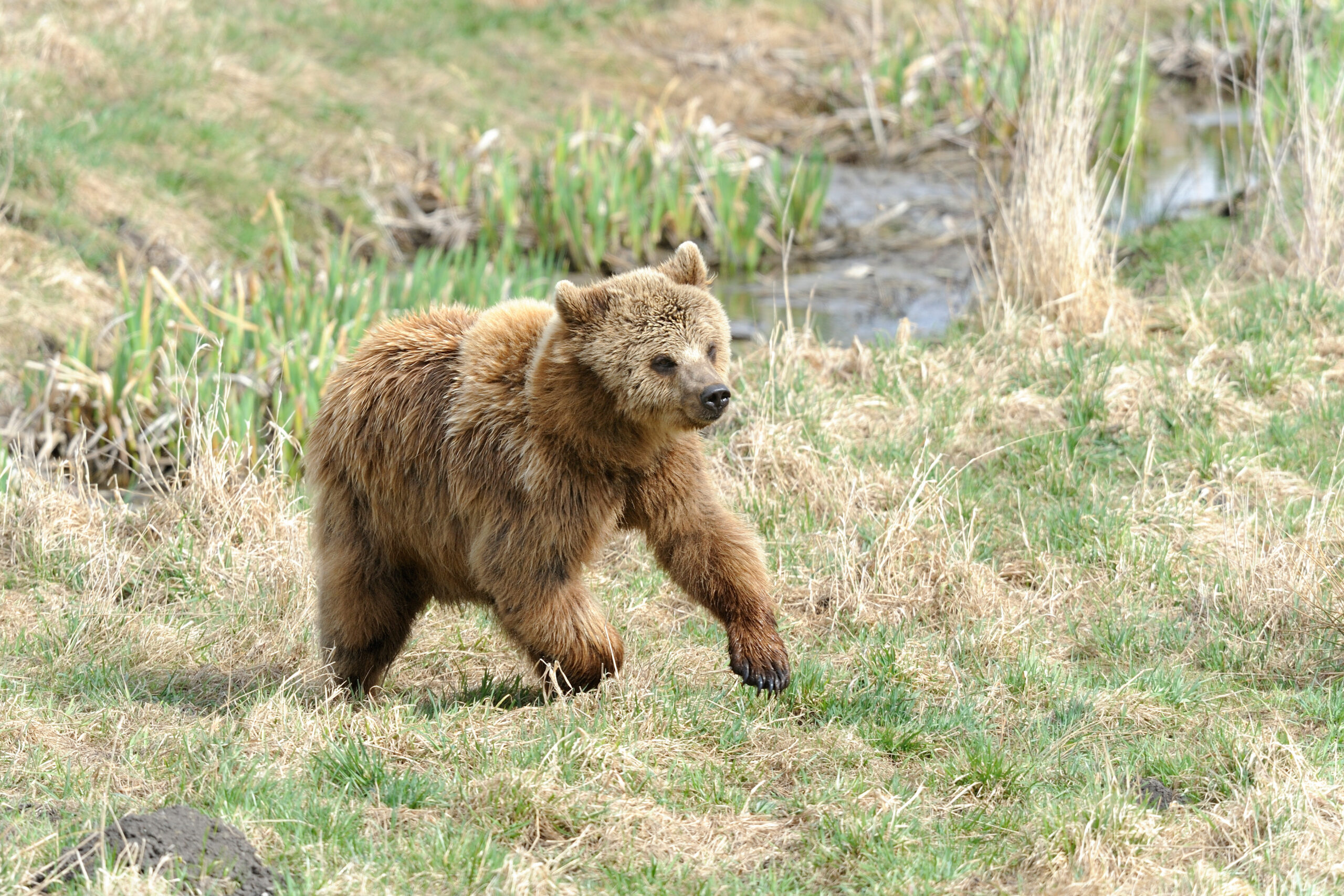
Running away from any bear species is never a smart option. Even if you’re facing a slower bear, like a polar bear or a fat black bear, it can catch up to you shockingly fast. And if you’re facing a grizzly bear, which also happens to be the fastest bear species in the world, you don’t stand a chance. Make noise, grab your bear spray, and hold your ground.

